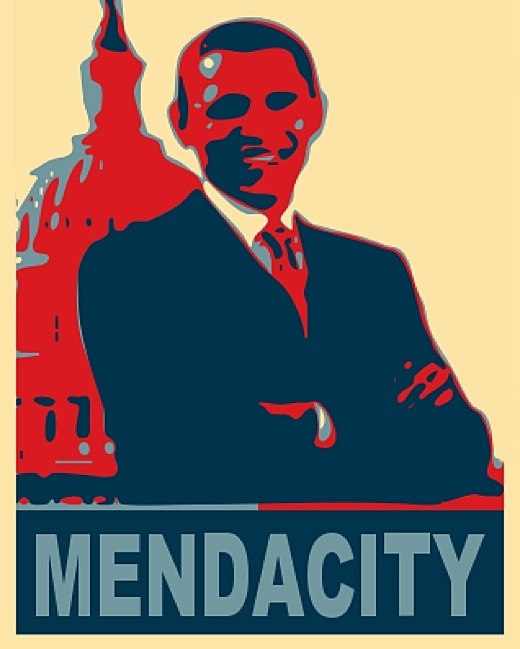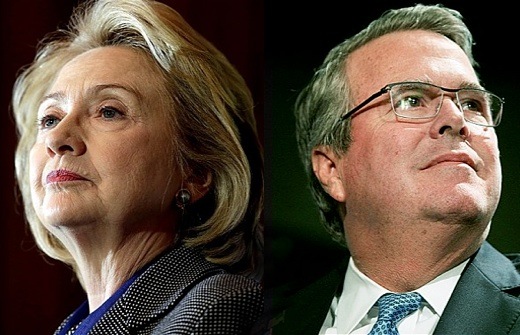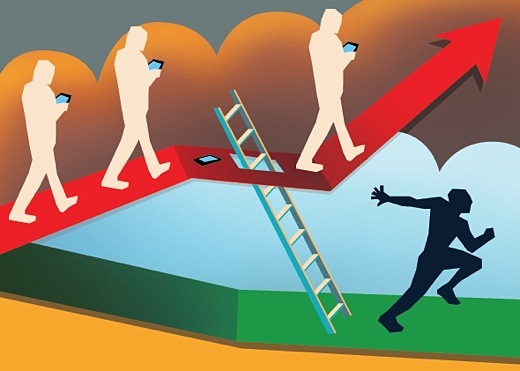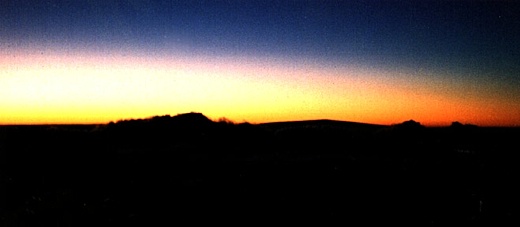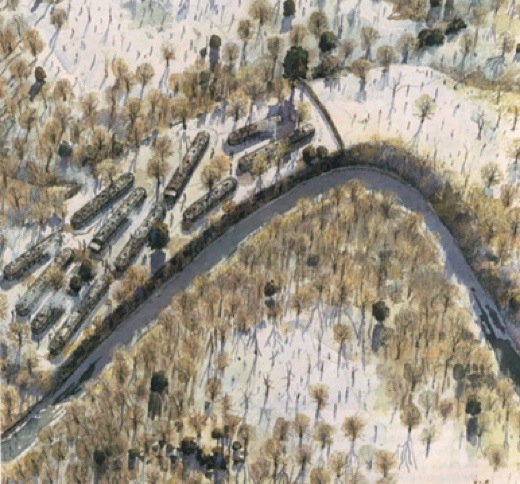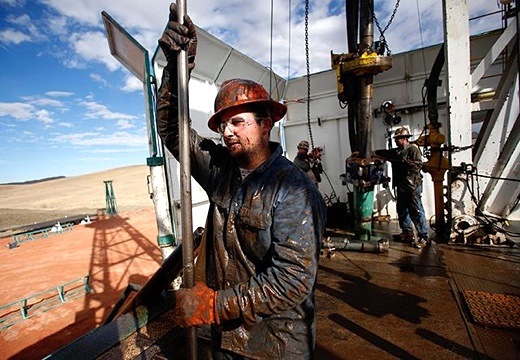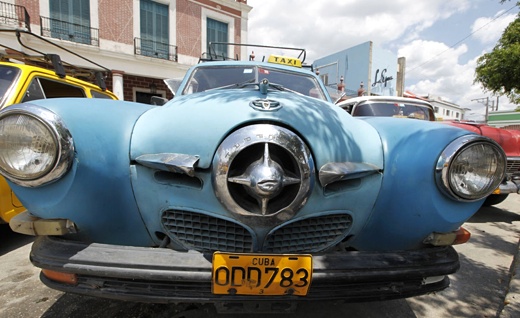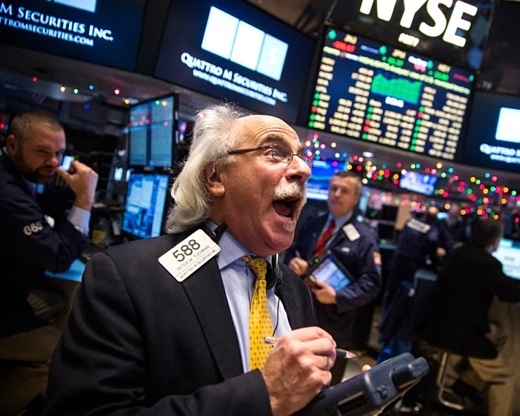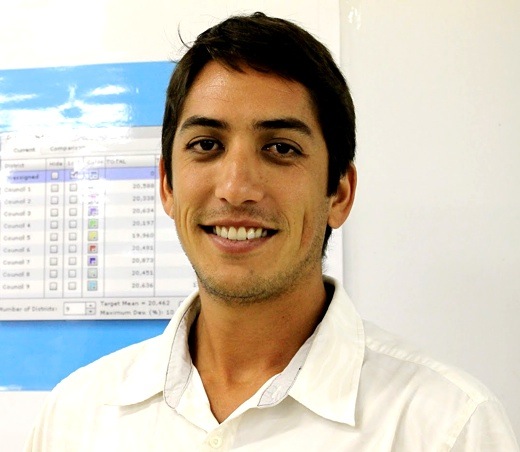SUBHEAD: An interview with heritage seed bank founder Ken Green.
By Nasimeh Bahrayni-Easton on 20 December 2014 for Shareable -
(http://www.shareable.net/blog/interviewed-ken-greene-of-hudson-valley-seed-library)

Image above: Greene with Vandana Shiva, renowned environmental activist. Photo from Hudson Valley Seed Library and in original article.
In 2004, Ken Greene was working as a librarian in Gardiner, New York when he decided to go beyond the bounds of his own personal garden and take his passion for seed saving into a more public, community-based arena.
He began the Hudson Valley Seed Library (HVSL) out of the Gardiner Public Library, initially just adding the seed varietals to the library catalog as another item that patrons could "check out."
For four years, Greene ran the HVSL out of that location, but in 2008 he and his business partner Doug Muller moved the HVSL onto a farm in Accord, New York where it has remained ever since. Nowdays, the library catalog is online, the team has grown to include a dozen or so others in addition to Ken and Doug, and the library's membership boasts over 1,000 farmers and gardeners.
Shareable caught up with Greene to talk about his organization's roots, his passion for stories, and the future of seed libraries.
SHAREABLE: What inspired Hudson Valley Seed Library?
Ken Greene: I had become a seed saver in my own garden after learning about some of the global seed issues including loss of genetic diversity and consolidation of seed resources by the biotech industry. I wanted to make a small difference by taking responsibility for our local seeds and making sure they were preserved and protected.
But that didn't feel like I was doing enough, I wanted to find a way to share the seeds, and seed saving skills, with more people in my community. The more hands and gardens the seeds pass through, the more alive and protected they are for the future. I began to see seeds as having much in common with books- especially books in a library.
My deep appreciation for libraries and new-found passion for seeds were starting to become one. I began to see every seed was a story and felt the stories were meant to be shared. Growing a seed meant growing its story and keeping it alive. I saw that libraries keep stories alive by sharing them. So, adding seeds to the library catalog seemed logical, necessary, and important.
Just as our library was making out-of-print books available to the community, we could also make heirloom seeds, many under the threat of extinction, continually available. Just as we were keeping ideas, imagination, and stories alive by sharing them in print, we could keep the genetics and the cultural stories of seeds alive by sharing them.
Just as we trusted our patrons to bring back the books they checked out so that they could continue to be shared, I wondered if we could count on gardeners to save some seeds from the plants they grew to return to the library, keeping the seeds alive and creating regionally adapted varieties.
What was the community response?
Initially people were confused about seeing seeds available to check out in the library. Luckily, the library director, Peg Lotvin, and a local farm intern who was one of the founders of BASIL, a Bay Area seed exchange, were very enthusiastic about the idea.
Over time with meetings, workshops, and putting in a seed garden around the flag pole on the front lawn, the seed library became an appreciated part of the public library- and the first of its kind in the country.
The year before I quit my job to farm seed full time we had about 60 active members in the seed library. The next year, when my partner Doug and I put the library idea online, we had 500 members.
Today we have a full seed catalog that anyone can buy homegrown, independent, organic seed from and we have an active seed saving community of over 1200 gardeners and farmers who participate in our "One Seed, Many Gardens" online seed library program.

A three pound heirloom tomato. Credit: HVSL Facebook
Other than seed preservation, what other roles does the HVSL play in the community?
I never would have imagined that our tiny seed library would grow into a full-fledged seed company and take over my life! I'm now on the Board of Directors for the Organic Seed Alliance, give lectures and teach workshops about seeds all over the country, and we are the largest producer of Northeast grown and adapted seeds in the country.
What draws you personally to seed preservation?
I love nurturing our plants through their full life-cycles and sharing the joy, magic, and abundance of seeds with others. More than preservation, I'm drawn to the idea that plants are always changing, just as we are. In order to keep these seeds alive and in the dirty hands of caring growers we need to allow them to change with us.
HVSL also does lovely art commissions for its seed packets. What's the story behind that?
I believe that artist are cultural seed savers and seed savers are agri-cultural artists. I came up with the idea of working with artists after collecting antique seed catalogs to research what varieties were being grown in our region 50-100 years ago. These old catalogs are full of art- no photographs.
Just as I want to keep the tradition of saving seeds by hand, I wanted to find a way to continue the beautiful and compelling tradition of illustrated catalogs- but in a more contemporary way. Our packs help remind us that seeds are not just a commodity to be bought and sold- they are living stories. The diversity of the artwork on our packs (each one is by a different artist) celebrates the diversity of the seeds themselves.

Seed packets from the seed library. Credit: HVSL Facebook.
A New York Times article about HSVL says you collect “cultural stories” as well as seeds. Can you speak a little more about that?
Every seed is a story. Actually, every seed is many stories. Genetic stories, human stories of travel, tragedy, an spirit. Some seed stories are tall tales, myths, or very personal stories from recent generations. We share many of these stories on our website as well as the stories of how we grow and care for the seeds in our catalog.
That article states that many of your members live in New York City. Why do you think it's important to offer your services to cities?
Many of the gardeners (and farmers!) who grow with our seeds do live in urban areas. There are more urban growers of all kinds- rooftops, containers, community gardens- than ever before. Finding the right varieties to grow in the many micro-climates that urban gardeners experience means searching out a diversity of seed sources.
Conventionally bred seeds are meant to be grown on large industrial and chemical based farms. The heirloom and open-pollinated seeds in our catalog have more flexibility, resiliency, and the most potential for adapting to urban growing environments.
What does the future look like for HVSL - and for seed libraries in general?
Over time the Hudson Valley Seed Library has become a mission-driven seed company. Our seed library model has changed to better focus on sharing high-quality seed.
We based the new model on the popular “Community Reads” or “One Book, One Town” reading programs organized by book libraries all over the country where the whole town reads one book. By encouraging every member in the Seed Library to grow the same variety in the same season, we’ll be able to teach everyone how to grow, eat, and save seeds from the varieties.
We connect all of our gardens into one big seed farm--growing enough seeds of each year's Community Seed variety to share with friends, family, and our communities. Enough to last. We've also begun training small-scale farmers on how to integrate seed saving into their food farm systems- the more local seeds the better!
On another note, your farm used to be a Ukrainian summer camp?!
The land we live on and grow on is shared by a community of friends. Originally a Catskill "poor-man's" resort with a hotel, boarding houses, kitchen building, ball room and more, the property was bought by a Ukrainian cultural camp in the late 60s.
Our group bought it from adults who had been campers here. We're fixing up what we can save, tearing down and salvaging the structures we can't save, building soil, growing seeds, and preserving the wildness of the surrounding woods.

The Seed Library farm. Credit: HVSL Facebook.
Do you have any advice for anyone who might want to start a seed library in their own community?
Yes! Mainly- there is no one thing that is a seed library. There are now over 300 seed libraries, seed swaps, seed exchanges, and community seed banks all over the country. Each one is different from the next.
I recommend starting with a simple seed swap to see who in your community is interested in gardening and seeds and then letting the group develop their own way of sharing seeds and their stories. I help communities develop community seed saving groups and there are many more resources out there than there were 10 years ago when I started the Hudson Valley Seed Library.
And lastly, what is your favorite or most interesting new plant?
Always the hardest question! I love all of the 400 varieties in our catalog for different reasons. We have cultivated and wild flowers, vegetables, culinary and medicinal herbs, and some oddities just for fun.
For food I'm most excited about our Panther Edamame- a black open-pollinated nutty-flavored edamame that we grow in partnership with the Stone Barns Center.
For cultivated flowers I'm in love with Polar Bear Zinnia- a creamy white flower, for wild flowers I'm proud to now offer Milkweed to help stem the near extinction of Monarch Butterflies, and for herbs I love Garlic Chives which make the most amazing Kimchi.
You can connect more with the Hudson Valley Seed Library via their website or facebook.
.
By Nasimeh Bahrayni-Easton on 20 December 2014 for Shareable -
(http://www.shareable.net/blog/interviewed-ken-greene-of-hudson-valley-seed-library)

Image above: Greene with Vandana Shiva, renowned environmental activist. Photo from Hudson Valley Seed Library and in original article.
In 2004, Ken Greene was working as a librarian in Gardiner, New York when he decided to go beyond the bounds of his own personal garden and take his passion for seed saving into a more public, community-based arena.
He began the Hudson Valley Seed Library (HVSL) out of the Gardiner Public Library, initially just adding the seed varietals to the library catalog as another item that patrons could "check out."
For four years, Greene ran the HVSL out of that location, but in 2008 he and his business partner Doug Muller moved the HVSL onto a farm in Accord, New York where it has remained ever since. Nowdays, the library catalog is online, the team has grown to include a dozen or so others in addition to Ken and Doug, and the library's membership boasts over 1,000 farmers and gardeners.
Shareable caught up with Greene to talk about his organization's roots, his passion for stories, and the future of seed libraries.
SHAREABLE: What inspired Hudson Valley Seed Library?
Ken Greene: I had become a seed saver in my own garden after learning about some of the global seed issues including loss of genetic diversity and consolidation of seed resources by the biotech industry. I wanted to make a small difference by taking responsibility for our local seeds and making sure they were preserved and protected.
But that didn't feel like I was doing enough, I wanted to find a way to share the seeds, and seed saving skills, with more people in my community. The more hands and gardens the seeds pass through, the more alive and protected they are for the future. I began to see seeds as having much in common with books- especially books in a library.
My deep appreciation for libraries and new-found passion for seeds were starting to become one. I began to see every seed was a story and felt the stories were meant to be shared. Growing a seed meant growing its story and keeping it alive. I saw that libraries keep stories alive by sharing them. So, adding seeds to the library catalog seemed logical, necessary, and important.
Just as our library was making out-of-print books available to the community, we could also make heirloom seeds, many under the threat of extinction, continually available. Just as we were keeping ideas, imagination, and stories alive by sharing them in print, we could keep the genetics and the cultural stories of seeds alive by sharing them.
Just as we trusted our patrons to bring back the books they checked out so that they could continue to be shared, I wondered if we could count on gardeners to save some seeds from the plants they grew to return to the library, keeping the seeds alive and creating regionally adapted varieties.
What was the community response?
Initially people were confused about seeing seeds available to check out in the library. Luckily, the library director, Peg Lotvin, and a local farm intern who was one of the founders of BASIL, a Bay Area seed exchange, were very enthusiastic about the idea.
Over time with meetings, workshops, and putting in a seed garden around the flag pole on the front lawn, the seed library became an appreciated part of the public library- and the first of its kind in the country.
The year before I quit my job to farm seed full time we had about 60 active members in the seed library. The next year, when my partner Doug and I put the library idea online, we had 500 members.
Today we have a full seed catalog that anyone can buy homegrown, independent, organic seed from and we have an active seed saving community of over 1200 gardeners and farmers who participate in our "One Seed, Many Gardens" online seed library program.

A three pound heirloom tomato. Credit: HVSL Facebook
Other than seed preservation, what other roles does the HVSL play in the community?
I never would have imagined that our tiny seed library would grow into a full-fledged seed company and take over my life! I'm now on the Board of Directors for the Organic Seed Alliance, give lectures and teach workshops about seeds all over the country, and we are the largest producer of Northeast grown and adapted seeds in the country.
What draws you personally to seed preservation?
I love nurturing our plants through their full life-cycles and sharing the joy, magic, and abundance of seeds with others. More than preservation, I'm drawn to the idea that plants are always changing, just as we are. In order to keep these seeds alive and in the dirty hands of caring growers we need to allow them to change with us.
HVSL also does lovely art commissions for its seed packets. What's the story behind that?
I believe that artist are cultural seed savers and seed savers are agri-cultural artists. I came up with the idea of working with artists after collecting antique seed catalogs to research what varieties were being grown in our region 50-100 years ago. These old catalogs are full of art- no photographs.
Just as I want to keep the tradition of saving seeds by hand, I wanted to find a way to continue the beautiful and compelling tradition of illustrated catalogs- but in a more contemporary way. Our packs help remind us that seeds are not just a commodity to be bought and sold- they are living stories. The diversity of the artwork on our packs (each one is by a different artist) celebrates the diversity of the seeds themselves.

Seed packets from the seed library. Credit: HVSL Facebook.
A New York Times article about HSVL says you collect “cultural stories” as well as seeds. Can you speak a little more about that?
Every seed is a story. Actually, every seed is many stories. Genetic stories, human stories of travel, tragedy, an spirit. Some seed stories are tall tales, myths, or very personal stories from recent generations. We share many of these stories on our website as well as the stories of how we grow and care for the seeds in our catalog.
That article states that many of your members live in New York City. Why do you think it's important to offer your services to cities?
Many of the gardeners (and farmers!) who grow with our seeds do live in urban areas. There are more urban growers of all kinds- rooftops, containers, community gardens- than ever before. Finding the right varieties to grow in the many micro-climates that urban gardeners experience means searching out a diversity of seed sources.
Conventionally bred seeds are meant to be grown on large industrial and chemical based farms. The heirloom and open-pollinated seeds in our catalog have more flexibility, resiliency, and the most potential for adapting to urban growing environments.
What does the future look like for HVSL - and for seed libraries in general?
Over time the Hudson Valley Seed Library has become a mission-driven seed company. Our seed library model has changed to better focus on sharing high-quality seed.
We based the new model on the popular “Community Reads” or “One Book, One Town” reading programs organized by book libraries all over the country where the whole town reads one book. By encouraging every member in the Seed Library to grow the same variety in the same season, we’ll be able to teach everyone how to grow, eat, and save seeds from the varieties.
We connect all of our gardens into one big seed farm--growing enough seeds of each year's Community Seed variety to share with friends, family, and our communities. Enough to last. We've also begun training small-scale farmers on how to integrate seed saving into their food farm systems- the more local seeds the better!
On another note, your farm used to be a Ukrainian summer camp?!
The land we live on and grow on is shared by a community of friends. Originally a Catskill "poor-man's" resort with a hotel, boarding houses, kitchen building, ball room and more, the property was bought by a Ukrainian cultural camp in the late 60s.
Our group bought it from adults who had been campers here. We're fixing up what we can save, tearing down and salvaging the structures we can't save, building soil, growing seeds, and preserving the wildness of the surrounding woods.

The Seed Library farm. Credit: HVSL Facebook.
Do you have any advice for anyone who might want to start a seed library in their own community?
Yes! Mainly- there is no one thing that is a seed library. There are now over 300 seed libraries, seed swaps, seed exchanges, and community seed banks all over the country. Each one is different from the next.
I recommend starting with a simple seed swap to see who in your community is interested in gardening and seeds and then letting the group develop their own way of sharing seeds and their stories. I help communities develop community seed saving groups and there are many more resources out there than there were 10 years ago when I started the Hudson Valley Seed Library.
And lastly, what is your favorite or most interesting new plant?
Always the hardest question! I love all of the 400 varieties in our catalog for different reasons. We have cultivated and wild flowers, vegetables, culinary and medicinal herbs, and some oddities just for fun.
For food I'm most excited about our Panther Edamame- a black open-pollinated nutty-flavored edamame that we grow in partnership with the Stone Barns Center.
For cultivated flowers I'm in love with Polar Bear Zinnia- a creamy white flower, for wild flowers I'm proud to now offer Milkweed to help stem the near extinction of Monarch Butterflies, and for herbs I love Garlic Chives which make the most amazing Kimchi.
You can connect more with the Hudson Valley Seed Library via their website or facebook.
.


